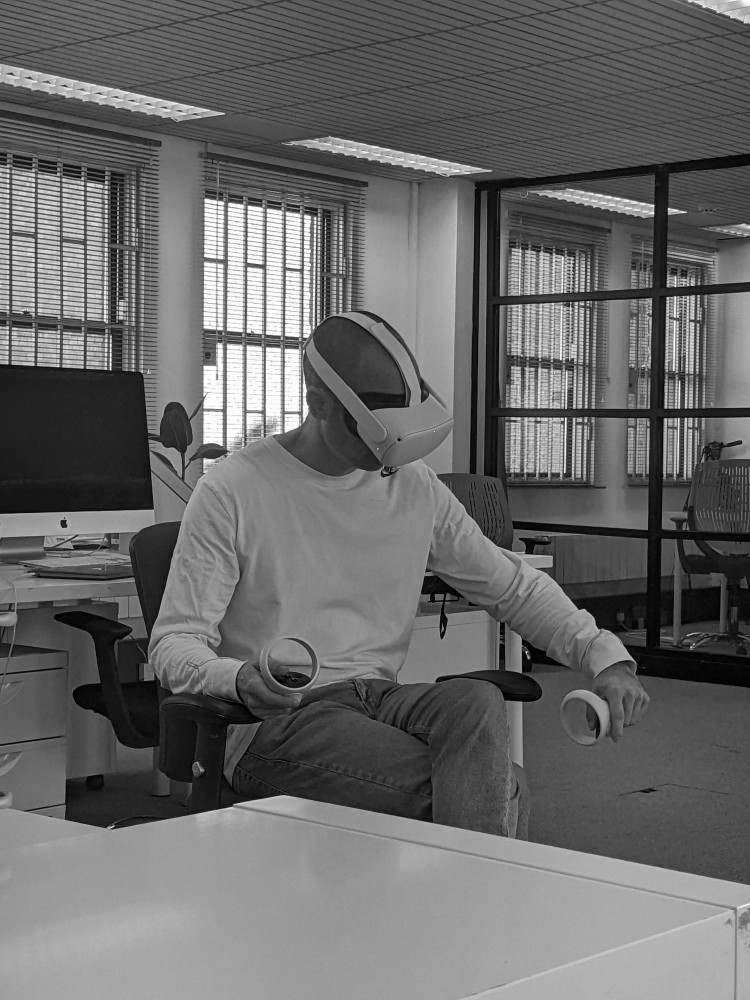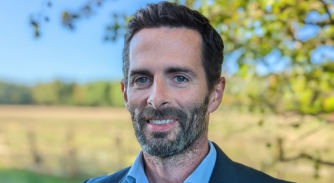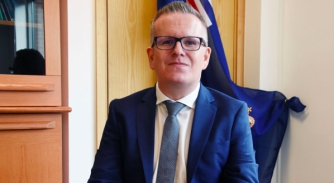Top stories 2022: Headlong into the metaverse
Andy Parkin, Managing Director of KILO, demonstrates VASCO - an augmented reality training platform for ColRegs and BRM…
Debate on the merits of the metaverse seems to be everywhere right now. I must admit that I have fallen on the side of the Luddites in my admittedly surface-level analysis. Something along the lines of - too clunky, too slow and followed by the sweeping assertion ‘I just don’t see it taking the place of real-life interactions and serious applications.’
Despite ignorant hesitancy, I still had the nagging feeling that in the face of exponential technological development, the trend towards VR, AI and next-generation training was the inevitable way forward.
I was intrigued then to have the chance to try out VASCO, a VR tool for maritime training courtesy of KILO Solutions, utilising a Meta Oculus 2, from the relative comfort of my South London office. Andy Parkin, Managing Director of KILO, gave me some context, right before we jumped onboard the bridge of a virtual cruise ship.
 Taking the con on the 'bridge', and joining the KILO team, connecting from Southampton
Taking the con on the 'bridge', and joining the KILO team, connecting from Southampton
“Throughout the past 12 years, I have programme led immersive technology projects that have encompassed innovative solutions such as 3D walkthroughs of nuclear submarines, the Queen Elizabeth Class aircraft carrier and driver safety challenges for a major port operator, as well as digital learning applications for Carnival Corporation" explains Parkin
“With this background, combined with a previous career in the Royal Navy, my gravitational pull was to set up a business that focused on delivering contemporary training and communication solutions into the Maritime sector, resulting in the launch of Kilo in early 2020 ” continues Parkin. “We saw a gap opening up in an industry with high ambitions between training and technology, but a genuine transformation of training delivery had failed to match stated ambitions, with traditionalists struggling to shift the paradigm and benefit from the innovation in technology that is now commonplace in many other sectors such as Defence, Engineering, Aviation and Medical. The truth is that Maritime was failing to recognise that audience expectations had changed and contemporary technology could be utilised with confidence to many of the sector’s skill development challenges”
Some corners of maritime training are indeed approaching antiquation. Steeped in hundreds of years of tradition, the proud history of oceanic navigation has created a fascinating and challenging career. However, the debates over the relevance of a cadet spending months toiling over spherical trigonometry for a celestial navigation course in the face of near-ubiquitous GPS and internet connectivity are intensifying, to take one example.
One aspect that is unlikely to change is the rules of the road. The ColRegs (International Regulations to Prevent Collisions at Sea) are foundational to training and safe operations. Memorised by legions of cadets and officers worldwide, they can make or break an exam. Within this scope for modernisation and incorporation of emerging and established technologies, platforms such as VASCO are pioneering their use in the marine sector. The interfaces may change but the theory will remain.
Set up in response to ambition from part of the marine sector for a greater digital offering regarding training, KILO has developed VASCO to offer maritime educators a safe, immersive and versatile training platform to practice (and refresh) ColRegs as well as effective Bridge Resource Management (BRM).
One of the first clients to see the advantages of VASCO has been Al Seer marine. Responsible for the management of the Abu Dhabi royal fleet, Al Seer also has to consider the training and skills of a vast number of crew. Almost all yacht officers will have felt the need to brush up on their ColRegs and BRM, myself included.
Al Seer’s involvement is a significant show of support for the system, and an indication of their innovative and strategic ambition. I was able to try a similar scenario that KILO has been implementing with Al Seer. Starting in May 2022, Kilo developed a program within VASCO that is scalable and provides an off-line training experience which will challenge mariners to conduct harbour transits safely, and compliant with international standards, as the vessel is manoeuvred in and out of port.
“E-learning is one component but, for us, not the most exciting. Of course, this is an element that can achieve compliance with theoretical principles, but for us, it is more about the application of knowledge. How can we ensure that seafarers can implement their training to ensure that their certificate of competency actually has value? How can they apply that theoretical knowledge practically?”
“As we know, you get people turning up on the bridge and they can tell you the square root of a jar of pickles but they can't take the lid off. We want to ensure they can!”
The simple equation, as Parkin explains, is that it is far cheaper to bring the simulator to a seafarer than fly them to a multi-million dollar simulator. “With VASCO we can bring seafarers, no matter their geographical location, together in a training architecture where we can provide the underpinning knowledge and then mentor and evaluate the application of that knowledge at Individual and Team level, against pre-agreed competency standards. It also provides us with an opportunity to extend training to the full bridge team to include Helm and Lookouts, alongside junior watchkeepers, all of whom are unlikely to be funded to attend fixed simulators, yet form an essential part of any Bridge team.”
The VASCO system I found myself in was based on the bridge of a cruise ship, as can be seen below. Although initially unfamiliar, the generic environment soon became clear. My pale blue avatar was soon met by Paul, one of the master mariners who oversaw the training. Parkin sat back, in one of the observational positions to oversee our exercise, and whose perspective the recording takes.
Much like the scene in the matrix, where the protagonists appear in a black space in VR where they may “assemble everything they may need” the environment I faced through the bridge from my position at the ECDIS could be manipulated by Parkin. Islands and containerships appeared, and a few tests of my embarrassingly rusty ColRegs and ship handling ensued.
To counteract the documented instances of ‘VR sickness’ users of VASCO can select one of 11 bridge positions which they can teleport to, negating the movement across the space that some can find disconcerting. Once in my position, I can see Paul, my instructor sitting across from me at the radar station, and can hear the voice of the omnipotent Parkin in my ear, overseeing the exercise.
Hovering my hand over the NFU (Non Follow-up mode) gave a reassuring vibration(haptic) through the handset while the control unit light changed from red to green. I now had control of the ship and had multiple decisions to make. Hard to starboard to avoid the container ship ahead, but slightly to port, or avoid the vessel moving slightly faster than me, on the same heading and slightly abaft the beam? A rapid re-education unfolded and was recorded.
Consulting my Garmin watch later that night affirmed that my heart rate had indeed spiked. The experience was immersive and comical to my colleagues in the office. After five minutes I was genuinely invested in the fate of my first cruise ship command. Despite ostensibly also being a chance to speak with Parkin and the team about the system, I was consistently distracted by the entirely inconsequential island on my screen and the oil rig that may cause an issue if I hold my course and conversation.
One of the most striking aspects of the experience is the way that the perspective shifts with movement. While the fidelity may not be lifelike, unlike simulators that I have used, when you move your head the view changes. The stanchion that ostensibly blocks part of the view forward, like any bridge, can be peered around to reveal what is obscured. In short, a little movement can impart a lot of information. The parallax capability lends a sense of reality that is missing from conventional simulators.
After a highly entertaining 20 minutes, where I managed to avoid hitting anything with the ship but succeeded in exposing the real gaps in my ColRegs and BRM, I was a convert to the technology. The potential for this system seems vast. Being viscerally immersed in a scenario, even for 20 minutes, reinforced how vital refreshing skills can be. VASCO is designed, Parkin tells me, to be completely scalable.
Not all clients will have the fleet of yachts and officers that require refreshing, such as Al Seer. The team are developing bespoke single-use programs for everything from small tug boat operators and fishing vessels to extensive fleets within the Commercial and Military sector.
The metaverse and VR are here, and a few companies are pioneering their application in the marine sector. In VASCO, KILO has a dynamic platform for remote skills applications for the marine sector. For less than the price of a flight to a simulator (roughly £300 for an Oculus unit), a superyacht can conduct remote training with its bridge and deck teams. Recordable and relatable, the future of training may have already arrived.
Profile links
NEW: Sign up for SuperyachtNewsweek!
Get the latest weekly news, in-depth reports, intelligence, and strategic insights, delivered directly from The Superyacht Group's editors and market analysts.
Stay at the forefront of the superyacht industry with SuperyachtNewsweek
Click here to become part of The Superyacht Group community, and join us in our mission to make this industry accessible to all, and prosperous for the long-term. We are offering access to the superyacht industry’s most comprehensive and longstanding archive of business-critical information, as well as a comprehensive, real-time superyacht fleet database, for just £10 per month, because we are One Industry with One Mission. Sign up here.
Related news

ABL Group appoints new Head of Yacht Services
International marine and offshore engineering consultancy ABL Group appoints Adam Jackson
Business

MCA appoints interim CEO
Damien Oliver has been appointed as the interim Chief Executive of the Maritime and Coastguard Agency (MCA)
Business

Data management systems research
The Superyacht Agency is investigating the current market and the effectiveness of superyacht data management and monitoring systems…
Crew

Isotropic launch Network Management and Cyber Security platform
The platform aggregates cellular, Wi-Fi, and multi-orbit satellites, including Starlink and OneWeb…
Crew

What do you think of data management systems?
The Superyacht Agency is investigating the current market and the effectiveness of superyacht data management and monitoring systems
Crew
Related news
ABL Group appoints new Head of Yacht Services
3 years ago
MCA appoints interim CEO
3 years ago
Data management systems research
3 years ago
What do you think of data management systems?
3 years ago
NEW: Sign up for
SuperyachtNewsweek!
Get the latest weekly news, in-depth reports, intelligence, and strategic insights, delivered directly from The Superyacht Group's editors and market analysts.
Stay at the forefront of the superyacht industry with SuperyachtNewsweek



